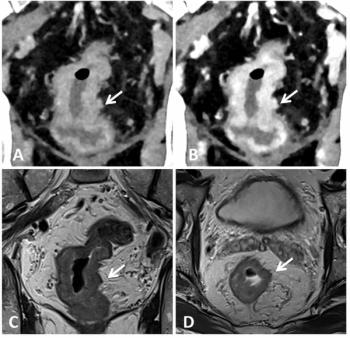
Diffusion-Weighted MRI Can Assess Myeloma Treatment Response
Diffusion-weighted imaging helps physicians assess myeloma treatment effectiveness.
Use of whole-body diffusion-weighted (DW) MR imaging (MRI) can help physicians determine treatment response for patients with myeloma, according to a study published in the journal
Researchers from the UK performed a small prospective study aimed at determining the feasibility of using whole-body DW MRI for treatment assessment in patients with myeloma. The researchers recruited eight healthy volunteers with an age range of 25 to 40 (cohort 1a) and seven patients who had myeloma, ages 37 to 69 (cohort 1b). A third cohort, 2b comprised 34 patients, ages 42 to 73, who also had myeloma.
The subjects in cohorts 1a and 1b underwent imaging twice so the researchers could assess the repeatability of quantitative apparent diffusion coefficient (ADC) estimates. Cohort 2 underwent whole-body DW imaging before treatments. Among this group, 26 subjects completed post-treatment imaging as well.
The researchers found that whole-body DW imaging scores differed significantly between observers, but the change in scores after treatment did not differ. “Sensitivity and specificity for detecting response according to observer scores were 86 percent (18 of 21 patients) and 80 percent (four of five patients) for both observers,” the authors wrote. “ADC measurement was repeatable, mean coefficient of variation was 3.8 percent in healthy volunteers and 2.8 percent in myeloma patients.”
Other findings indicated that pretreatment ADC among the subjects in cohort 2 was significantly different from that in cohort 1a but not cohort 1b. “Mean ADC increased in 95 percent (19 of 20) of responding patients and decreased in all (five of five) non-responders. A 3.3 percent increase in ADC helped identify response with 90 percent sensitivity and 100 percent specificity; an 8 percent increase (greater than repeatability of cohort 1b) resulted in 70 percent sensitivity and 100 percent specificity.”
The researchers concluded that whole-body DW imaging would be a repeatable and useful tool in assessing treatment response among patients with myeloma.
Newsletter
Stay at the forefront of radiology with the Diagnostic Imaging newsletter, delivering the latest news, clinical insights, and imaging advancements for today’s radiologists.



























